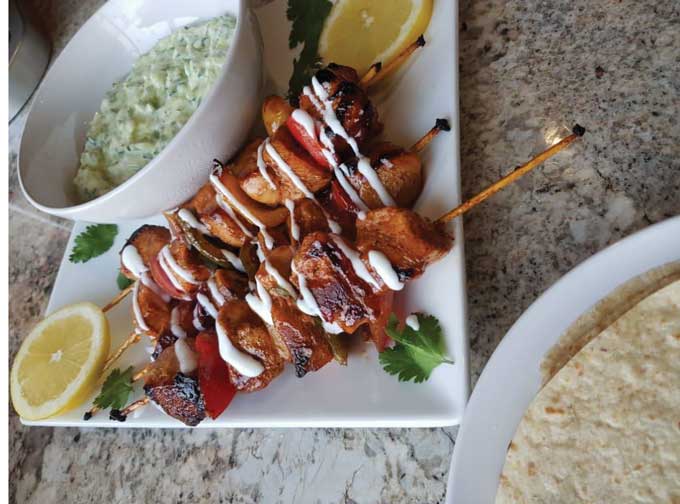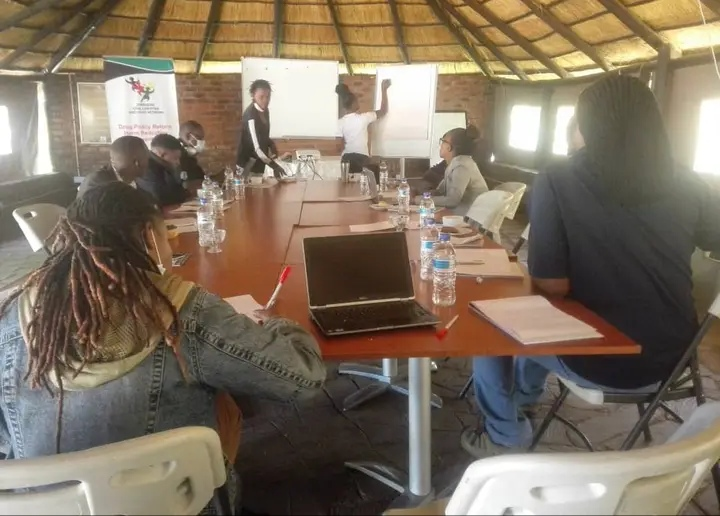
In Zimbabwe, the cultural landscape is experiencing a profound and dynamic metamorphosis, characterised by a vibrant shift from the cherished realms of traditional art forms and classical music towards the ever-evolving currents of trend-driven culture.
This transformation, while echoing global trends, is intricately woven with the rich embrace of local dynamics. Social media platforms, with their ceaseless flow of digital content, and the burgeoning influence of digital trends, are reshaping cultural consumption in unprecedented ways.
As Zimbabwe navigates this evolving cultural terrain, the interplay between enduring heritage and contemporary trends offers a captivating reflection of both local identity and global connectivity.
In Zimbabwe, I have seen firsthand how digital media has surged in popularity, with platforms like TikTok, Instagram, and Facebook becoming integral to the lives of younger generations.These platforms have ushered in a trend-driven culture where viral content grabs our attention almost instantly.
The allure of immediate entertainment and widespread appeal has become hard to ignore, shifting the spotlight away from our rich cultural heritage.
In Zimbabwe, local influencers and celebrities are shaping cultural trends by promoting popular music genres like Zimdancehall and Amapiano, which often dominate social media feeds.
While these genres reflect contemporary tastes, they sometimes eclipse traditional Zimbabwean art forms and music, which are perceived as less engaging in comparison. Influencers play a pivotal role in steering public attention towards these trendy cultural phenomena.
In Zimbabwe, the role of streaming services and social media algorithms in shaping cultural consumption has become increasingly significant.
- Mavhunga puts DeMbare into Chibuku quarterfinals
- Bulls to charge into Zimbabwe gold stocks
- Ndiraya concerned as goals dry up
- Letters: How solar power is transforming African farms
Keep Reading
Platforms such as YouTube and Spotify, while not as pervasive as in some other regions, are nonetheless crucial in determining the visibility of content.
These platforms use algorithms designed to prioritise trending music and viral content, which often means that traditional Zimbabwean music and art find themselves relegated to niche audiences.
For instance, on YouTube, popular music genres like Zimdancehall and Amapiano dominate the trending sections, driven by their viral appeal and widespread shareability.
This focus on contemporary, often global, trends can overshadow Zimbabwean traditional music genres such as Mbira or Chimurenga music as examples.
Similarly, Spotify’s algorithms tend to promote playlists and tracks that are currently trending globally or locally within popular genres.
As a result, playlists featuring traditional Zimbabwean music, like those showcasing traditional related soundtracks or indigenous drumming, may receive less exposure.
This algorithmic preference influences listeners to gravitate towards contemporary, often global, music trends rather than exploring and appreciating the depth of Zimbabwe’s rich musical heritage. Social media platforms like TikTok and Instagram further amplify this trend.
Viral dance challenges and music trends often feature popular tracks rather than traditional Zimbabwean music.
For example, a trending TikTok dance might feature an international hit, garnering millions of views and engagements, while traditional songs by Zimbabwean artists might not reach the same level of prominence. This constant influx of trend-driven content shapes users' cultural consumption patterns, pushing traditional art and music to the margins of the digital cultural landscape.
As a result, the algorithms and digital trends increasingly dictate cultural preferences in Zimbabwe influencing, which art forms and music genres receive mainstream attention and which are left in the shadows.
This shift accentuates the broader impact of digital media on cultural consumption, revealing both the opportunities and challenges faced by traditional Zimbabwean art and music in the modern digital age.
In Zimbabwe, a noticeable shift is occurring in consumer preferences, particularly among younger audiences who are increasingly drawn to trendy cultural experiences over traditional art and music. The rise of trend-driven events has become a hallmark of modern cultural consumption.
Music festivals featuring popular genres like Zimdancehall and Amapiano attract large crowds, showcasing the growing preference for contemporary, high-energy performances. Similarly, digital content plays a significant role in shaping preferences.
Platforms like TikTok and Instagram are flooded with viral challenges, dance routines, and music trends that captivate younger audiences.
These digital trends often overshadow traditional art forms and music, which may not have the same level of online visibility or engagement.
For example, while modern pop culture trends might dominate TikTok trends, traditional forms of Zimbabwean music and art struggle to capture the same level of social media attention and engagement.
Economic considerations also contribute to this shift. Trendy cultural experiences, often facilitated by digital platforms and modern entertainment venues, tend to be more affordable and accessible to the younger demographic.
Additionally, the accessibility of digital content is a significant factor. With the proliferation of smartphones and affordable data plans, engaging with the latest trends and viral content is more convenient than accessing traditional art forms, which might be confined to specific locations or require travel to cultural institutions.
Cultural and social dynamics further influence this shift. The rapid pace of modern life and the allure of instant gratification provided by trendy experiences often lead to a preference for content that offers immediate entertainment.
This trend aligns with broader global patterns where fast-paced, visually stimulating content has greater appeal compared to the more reflective and slower-paced experience of traditional art and music.
As a result, traditional cultural expressions, such as the intricate craftsmanship or the soulful rhythms of traditional music, are increasingly relegated to niche markets. While they remain valued by cultural enthusiasts and collectors, they struggle to compete with the mass appeal of contemporary, trend-driven experiences that resonate more with the evolving tastes of Zimbabwe’s younger generation.
Zimbabwean cultural institutions are beginning to adapt to these changes. Museums and galleries are exploring ways to integrate modern trends with traditional art, aiming to attract a broader audience.
Efforts include digital exhibitions and collaborations with popular influencers to bridge the gap between traditional and contemporary cultural practices.
Despite these efforts, challenges remain in balancing trendiness with the preservation of cultural heritage.
The shift towards trend-driven culture in Zimbabwe presents both challenges and opportunities. While traditional art and music may face declining visibility, there is potential for these forms to be revitalised through innovative approaches and integration with modern digital platforms.
By finding new ways to engage with contemporary audiences, Zimbabwean cultural forms can continue to thrive alongside evolving trends.
In Zimbabwe, the shift from cultural capital to trendiness reflects broader global trends but is also shaped by unique local factors.
As social media, influencers, and digital algorithms weave their intricate patterns into the fabric of cultural consumption, traditional Zimbabwean art and music find themselves at a pivotal crossroads. The vibrant embroidery of our cultural heritage must now navigate this swiftly shifting landscape, where the allure of the digital realm often overshadows the timeless beauty of our artistic traditions.
Yet, within this dynamic evolution lies a profound opportunity for adaptation and rejuvenation. By embracing innovative strategies and harnessing the power of modern platforms, Zimbabwe's cherished art forms and melodies can not only endure but flourish in the digital age.
Understanding this transformation offers a glimpse into how our rich cultural heritage can be gracefully woven into the ever-changing frequency of contemporary culture, ensuring that its essence remains vibrant and relevant for generations to come.
- Raymond Millagre Langa is a musician, poet, orator, independent researcher and founder of Indebo edutainment Trust. You can follow on Facebook @Millagre Ray Langa, on X you can follow on #Millagre Langa, email - millagrepapito@gmail.com or indebotrust@gmail.com.










